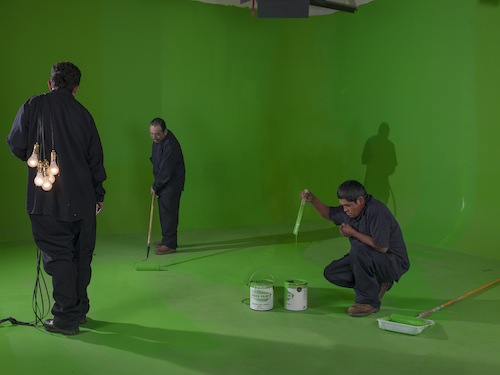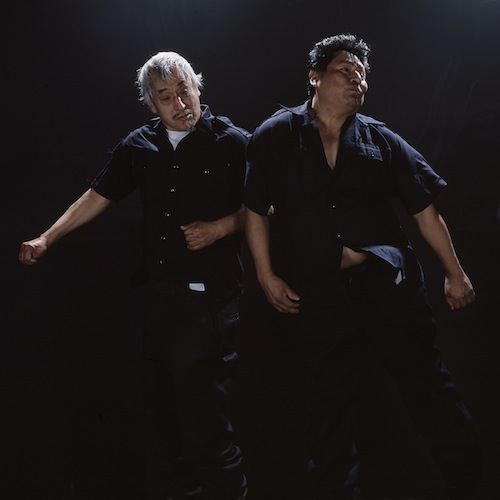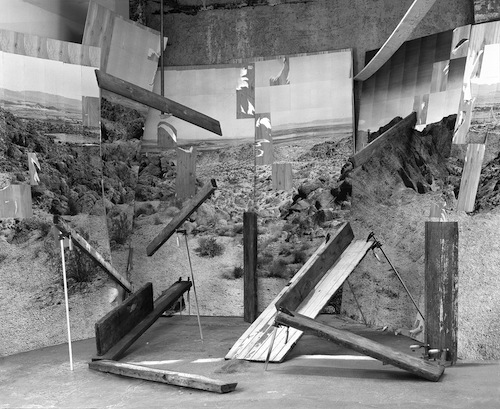Visual Arts — February 27, 2014 11:22 — 0 Comments
An Interview With Rodrigo Valenzuela
Rodrigo Valenzuela is a visual artist based in Seattle, WA. He recently won The Stranger’s Genius Award for his work. We here at The Monarch got a chance to catch up with Valenzuela to talk about his new exhibit at at Bryan Ohno Gallery, beginning March 6th.
Jake Uitti: The presentation of your new works is called “Goal Keeper” – it has the obvious connotation of someone with aims who works to meet those aims. But it also has the soccer/sports connotation I can’t help but think about. Was this intentional in any way, or am I crazy and watching too many sports?
Rodrigo Valenzuela: No, you are not crazy. I address a lot of issues in terms of soccer, laboral or social activities. There are a lot of really smart artists that can make art around the history of art, but I make work that is a symptom of my experiences – without navel gazing, of course.
Goalkeepers are interesting because when you’re a kid, nobody wants to be the goalie – actually in a pick up game the last one to be selected is the goal keeper. The professional goalkeeper is the base of the team, the only player that keeps an eye on the structure of the game, and here is where the analogy plays more in my show. His job is an act of disappearance. For example, if no one scores, it’s good, and when his team scores nobody comes to celebrate with him. In images like GoalKeeper #1, I want to set the viewer as the goalkeeper, as an observer of structures – how the images are articulated from the maker’s perspective giving her or him responsibility in the making (sense) while removing myself. Each piece is a set of images, sometimes it looks messy but they are not unfinished, they are a display of possibilities as they happen in my studio. Everything has importance. My aim is to break down the hierarchy of artist and viewer and give everyone autonomy to create these images.
In the series Auriatic Workers, I hire day laborers to play soccer in my studio and re-paint the green screen. While they play soccer, I take photographs and then erase the ball. When they paint, I document the process of green on green. Another gesture toward the disappearance that sometimes can be a simple object of desire. Eliminating the “wanted thing” I aim to rescue and isolate the physicality and production of desire.
JU: How did you come to these ideas as goals for your work? Do elements of prior exhibitions and work creep into your new ideas?
RV: Yes. the new work, for me, always comes as a reevaluation of my process. For my MFA thesis I first showed my series, The Builder. All the images were synthetic landscapes made out many negatives, intentionally romanticized, depicting a place that doesn’t exist. I made them to show that sometimes feelings are just dumped into an image or that the language we use to talk about it has no relationship with what we are looking at. In general I feel that when we anthropomorphize objects or images, the illusion of understanding is also created. In the Goal Keeper series I wanted to set an “honest” display of possibilities, all the materials engage in dialog, presenting themselves to the viewer, up for completion.
JU: Where does the artistic inspiration come from by hiring day laborers to participate in your installations/series?
RV: I worked waiting for construction jobs outside of Home Depot when I had just come to the country. So, it’s not inspiration, it’s just what I know. I don’t do a casting call or look for a particular look. I just go to this place and I offer a job. Anyone can work for the project and everyone is equally important. Coming back to the goalkeeper idea, all these guys are also part of the disappearance act. Minorities often get invisible jobs, when you get to your office, school or restaurant look around, look at the trash and the bathrooms. If you don’t see anything then that is a well done invisible job, often executed by disposable people.
JU: What work did you do as a hired laborer? What are your memories from this time?
RV: I did all kinds of jobs for about four years. Mopping floors, building walls, but mostly concrete jobs. I have a lot of good memories you can read some of them in my thesis in my webpage.
JU: You won the 2013 Stranger Genius Award for visual art. Has this changed your approach to your work at all?
RV: These kinds of awards haven’t changed the way I make work at all. I live off making art and teaching video at the University of Washington and Cornish, and the rest of the time I am on the road or doing residencies. It was really nice to get the Genius Award because I do not get a ton of opportunities in Seattle.
JU: What about Seattle drives you? What do you wish was different?
RV: I love Seattle but the sad part is that some of the smarter curators living here don’t have a job or they have to start their own project spaces also the best gallerists have to do it at their house. But maybe it’s a good thing…
JU: If you could have people learn one thing about you that you haven’t shared yet, what would that be?
RV: That I am constantly stressed out about not making good work and I idolize filmmakers like Peter Greenaway, Aki Kaurismaki, Valie Export, Bela Tarr, Wong Kar Wai, Claire Denis, and many more.
See the preview video for “Goal Keeper” here:
The answer isn't poetry, but rather language
- Richard Kenney





